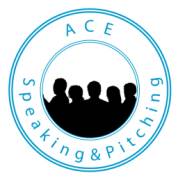What is a simple formula you can apply to ensure you are pitching for success?
P for Pain
A successful pitch starts with understanding and addressing the pain points of your audience. In any scenario, whether it’s a business meeting, an academic setting, or a public speaking engagement, recognising and empathising with the challenges or needs of your audience forms the foundation of a persuasive pitch. It’s crucial to ask yourself: What are their problems? How does my proposal provide a solution? This initial step sets the tone for a pitch that is not only heard but felt by the audience.
L for Language
The power of language in pitching cannot be overstated. Your choice of words, tone, and the overall way you communicate your message can make or break your pitch. It’s not just about what you say, but how you say it. Effective communication involves using clear, concise, and compelling language that resonates with your audience. It’s about crafting a narrative that engages, informs, and inspires.
A for Agreement
Creating a sense of agreement and understanding with your audience is essential. This involves actively engaging them in your pitch, addressing their concerns, and anticipating their questions. Your ability to effectively address questions and objections is a testament to your understanding of the subject and respect for your audience’s perspectives. It’s about building a bridge between your ideas and their expectations, leading to a mutual agreement and acceptance of your proposition.
N for Negatives: Negate the Negatives
Overcoming negatives is about turning potential drawbacks or objections into opportunities. Every pitch or presentation will encounter challenges, be it scepticism from the audience, limitations of the idea, or external factors. The key is to acknowledge these negatives, provide solutions or alternatives, and steer the conversation towards positive outcomes. This approach not only demonstrates your preparedness and adaptability but also helps in maintaining a positive and constructive tone throughout the pitch.
Drawing inspiration from Scott Perry’s ACE Speaking and Pitching blog, we can expand these concepts further. Perry emphasises the importance of structuring your pitch effectively, tailoring your content to your audience’s needs, and the power of storytelling and anecdotes to captivate your audience. He also highlights the significance of non-verbal communication, visual aids, and understanding your audience to elevate your presentation and ensure its success.
Mastering the art of pitching requires a blend of empathy, effective communication, engagement, and the ability to turn challenges into opportunities. By focusing on these key aspects – Pain, Language, Agreement, and Negating the Negatives – and building upon the insights from ACE Speaking and Pitching, you can craft pitches that are not only successful but also leave a lasting impact on your audience.

